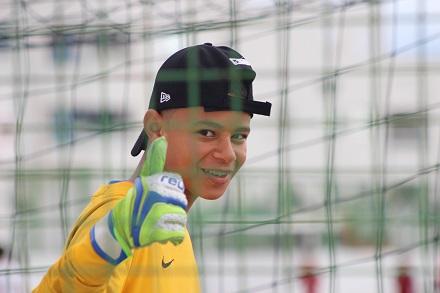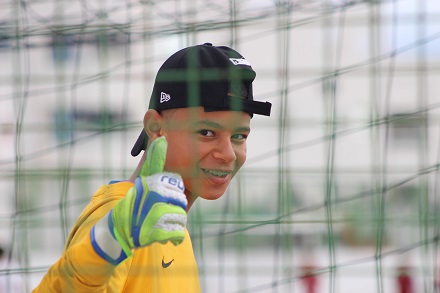

Brighter days are ahead. That’s the biggest takeaway from a survey of health and fitness professionals on the impact of, and progress since, COVID-19. And while recovery isn’t immediate, it is imminent.
The data comes from the COVID-19 Industry Impact Report for June 2020 compiled by the Sports & Fitness Industry Association.
Among the findings: 37% think youth sports will return in 2021 or later, and the two top categories to return to pre-COVID health first will be individual sports (72%) and outdoor sports (66%).
These predictions are actually already being borne out. Youth sports events are moving back into the arena – although admittedly, the optimism with which they’re being presented is tempered. In July, the AAU held its Junior Volleyball Nationals in Orlando – after establishing numerous smart measures to control the spread of the virus, shortening the event and having had to walk back its promise of a big June event. But it ultimately went on, which was an enormous win. So did youth basketball at Lake Point Sports. And the Waupaca Boatride Volleyball Tournament battled through rain to put on its event, which included a variety of age groups, from youth to adult.
But the real burst of events has taken place at the confluence of individual and outdoor sports – with fishing leading the pack. FLW and B.A.S.S. have hosted multiple events, and have more on the schedule, despite having to dance around various destinations’ regulations concerning large group gatherings and quarantine issues.
Overall, the survey said that industry members believe that a rebound from the effects of COVID-19 is going to happen – but that it will take time and that it will depend upon certain factors. A full 72% of companies noted they believed they would return to some semblance of pre-COVID-19 – but that they projected this would happen in 2021 or later, which was a 12-percentage-point increase over the last time they were surveyed (in May).
If sales of sporting goods (in all categories, from youth team sports to adult individual sports) are any barometer, there’s already some good news. Month-to-month sales data shows improvement, with 28% of respondents in June reporting an increase of sporting goods sales when compared to June 2019, doubling May 2020 to May 2019 comparisons. Additionally, 68% of companies saw greater sales in June 2020 than in May 2020. (One thing to keep in mind: some of the organizations reporting an uptick may have been those producing products for individual and/or outdoor sports – the categories that are already seeing more participation because of quarantine).
“We are happy to see sales going up, but the pandemic is far from over,” said Tom Cove, CEO and President of the SFIA. “Many individuals and families have adapted to new activities and sought out fitness equipment and outlets that let them participate under stay-at-home orders. However, until we can get kids back in schools and back on the field, our industry will have to be innovative in its approach to helping Americans stay active and healthy on a regular basis. The pandemic will make everyone be more creative, and we anticipate seeing new innovations that will stem from this situation.”
Looking ahead, it’s essential to know what organizations have to say about what they think WOULD help move the needle in participation in youth sports and drive them back to normal (or a semblance of normal). According to the survey, the following reports were given. Note: The largest two percentages always fell into determining something as an “absolutely essential” or “very important” priority, while other responses (of average importance, somewhat of little importance, and no importance at all) received very little endorsement and are not mentioned here.
- Decrease in Local COVID-19 Cases: The largest percentage (42%) said it was absolutely essential and 40% said it was very important.
- Availability of a Vaccine: 41% absolutely essential, 32% very important
- Response to a Possible Second Wave of an Outbreak: 35% absolutely essential, 40% very important
- CDC or Governmental Approval: 35% absolutely essential, 38% very important
- Widespread COVID Testing: 33% absolutely essential, 35% very important
- Opening of Elementary and Secondary Schools 31% absolutely essential, 39% very important
Other safeguards, such as Temperature and Symptoms Checks, and Widespread Antibody Testing, were seen as significantly less important.
Of interest: the survey noted that in May, only 28% said the development of a vaccine was absolutely essential to youth sports returning; by June, that percentage had skyrocketed to 41. The translation for that, according to SGB Media, was, “Return to play expectations were more optimistic in May but dropped in June as many states saw surges of the virus after reopening too quickly.”
Another aspect of the study included gyms, fitness centers and boutique fitness facilities. For the purposes of the sports event industry, it is essential to remember that these venues are typically the ones that host indoor events such as racquetball and squash tournaments, smaller functional fitness events and similar competitions.
A total of 91% those surveyed believed that in order for such facilities to reopen, smart precautions need to be taken, meaning masks needed to be required. Another 88% thought that antibacterial wipes should be required, and 90% thought the spacing out of equipment was a factor. 71% thought that having a vaccine available was very important in allowing such venues reopen and host again.
Unfortunately, gyms are one of the hardest-hit sectors, according to SGB Media, and the impact upon them continues to be felt. According to a survey from TD Ameritrade, 59 percent of Americans don’t plan to renew their gym memberships after the COVID-19 pandemic is over. As reported by CNBC, the survey showed 56 percent of those surveyed indicated the pandemic helped them find “more affordable” ways to get exercise and live a healthier lifestyle.
Without such facilities open, or with capacities at them limited, indoor competitive events may be at a standstill. USA Racquetball, for example, was forced to move its 2020 US Open to 2021; the event in Minneapolis typically uses gym venues that include the Lifetime Fitness and Univ. of Minnesota Rec. Center.
The SFIA noted there have been distinct differences in the answers given by respondents between the last survey (May) and this one (June). In May, 76% of respondents said they thought that gyms, health clubs and boutique fitness centers would return in the summer, while 80% believed that organized youth sports would return by September or October. As the virus continues to impact sports, expectations are more realistic.
To see the report data for June, click here. Data from other reports can be found on the SFIA site.

